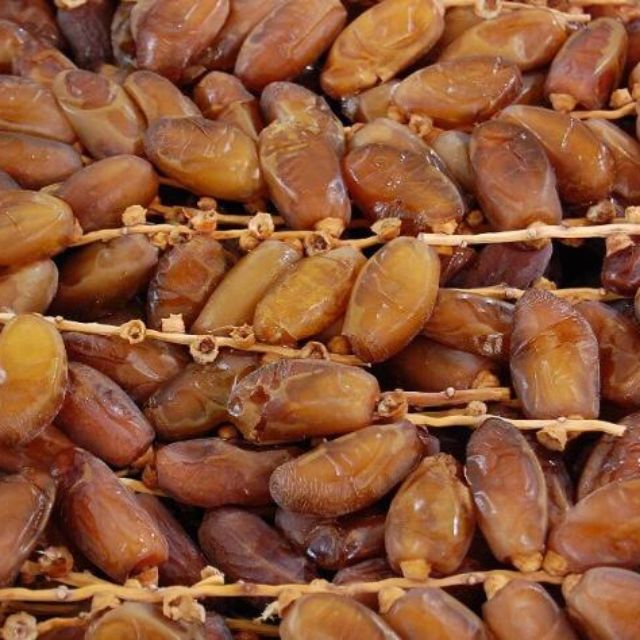Kurma Bertangkai in Wedding Ceremonies

The Significance of Kurma Bertangkai in Wedding Ceremonies
Kurma Bertangkai play a significant role in wedding ceremonies, particularly within the Malay community. These beautiful clusters of dates are not merely decorative elements but are laden with symbolism and cultural significance, adding charm and tradition to the auspicious occasion.
Symbolism and Blessings
1. Abundance and Prosperity
Kurma Bertangkai symbolizes abundance and prosperity in a couple’s married life. The dates, known for their natural sweetness, represent the wish for a marriage filled with sweetness, happiness, and fruitful experiences.
2. Fertility and Blessings
The presence of Bertangkai dates in a wedding ceremony symbolizes the desire for fertility and blessings upon the couple. It is believed that the dates bring forth blessings for the couple to have a prosperous and fruitful life together.
Customs and Practices
1. The Exchange of Bertangkai dates
During the wedding ceremony, it is customary for the bride and groom to exchange Bertangkai dates as a gesture of love and commitment. This exchange symbolizes the sharing of blessings, love, and good wishes for a blissful and harmonious union.
2. Decorative Displays
Kurma Bertangkai is often used as a decorative element in wedding ceremonies. They are arranged creatively and displayed prominently, adding elegance and a touch of nature’s beauty to the wedding venue. These date bunches enhance the overall aesthetics of the celebration.
3. Wedding Favors
As a gesture of appreciation, Kurma Bertangkai is sometimes given as wedding favors to guests. These delightful clusters of dates serve as a sweet reminder of the couple’s gratitude for the presence and well-wishes of their loved ones.
Preserving Tradition with Kurma Bertangkai
In a modern world, where wedding customs evolve, incorporating Bertangkai dates in ceremonies helps to preserve the rich cultural heritage and traditions of the Malay community. It serves as a beautiful reminder of the importance of embracing one’s roots while celebrating love and unity.
Examples of cultural traditions involving Kurma Bertangkai in wedding ceremonies:
1. Blessing Ceremony: In some Malay wedding traditions, a blessing ceremony called “Doa Selamat” is held before the wedding reception. During this ceremony, Bertangkai dates are placed on a tray alongside other symbolic items. The bride and groom’s parents or elders recite prayers and blessings while passing the tray over the couple’s heads, symbolizing the bestowing of blessings and well-wishes for their marriage.
2. The Exchange of Kurma Bertangkai Rings: In certain Malay wedding customs, the couple exchanges Kurma Bertangkai rings instead of traditional metal rings. These rings are made by stringing together small dates to form a ring shape. The exchange of these rings represents the commitment and unity of the couple, and the sweet nature of the dates symbolizes the sweetness of their love and future together.
3. Kurma Bertangkai as Centerpieces: Bertangkai clusters are often used as centerpieces on dining tables during the wedding reception. They add an elegant touch to the decor and serve as a conversation piece for guests. The presence of Kurma Bertangkai as centerpieces not only enhances the visual appeal but also symbolizes the abundance and blessings wished upon the couple and their guests.
4. Blessings for Future Generations: During the wedding ceremony, it is common for the couple to receive Bertangkai dates from their elders or respected members of the community. These dates are blessed and passed on to the couple with the intention of bringing blessings not only to them but also to their future generations. The couple may then distribute the blessed dates to their family members and close friends as a token of love and well-wishes.
5. Incorporation in Traditional Dishes: Bertangkai dates may be incorporated into traditional Malay dishes served during the wedding reception. For example, dates may be used as an ingredient in desserts or as a garnish for main courses. This not only adds a touch of sweetness to the culinary offerings but also serves as a symbolic reminder of the blessings and good fortune associated with Bertangkai dates.
These are just a few examples of the cultural traditions involving Bertangkai dates in wedding ceremonies. The specific customs and practices may vary depending on regional traditions and individual preferences. Nevertheless, Bertangkai dates continue to hold a special place in Malay wedding celebrations, symbolizing blessings, unity, and the sweetness of love and marriage.
Key highlights:
– Kurma Bertangkai, or date bunches, play a significant role in Malay wedding ceremonies.
– They symbolize abundance, prosperity, fertility, and blessings for the couple.
– Bertangkai dates are exchanged between the bride and groom as a gesture of love and commitment.
– They are often used as decorative displays and centerpieces during the wedding reception.
– Kurma Bertangkai may be given as wedding favors to guests.
– Blessing ceremonies and prayers involving Bertangkai dates are common.
– In some traditions, Kurma Bertangkai rings are exchanged instead of traditional metal rings.
– They are incorporated into traditional dishes served at the wedding reception.
– Kurma Bertangkai represents the preservation of cultural traditions and the celebration of love and unity.
Conclusion
Kurma Bertangkai holds a special place in wedding ceremonies, representing blessings, prosperity, and fertility. These date bunches serve as a symbolic delight, adding depth and tradition to the celebration. From the exchange of Bertangkai dates to their decorative presence, these clusters of dates infuse weddings with cultural significance and timeless charm.
